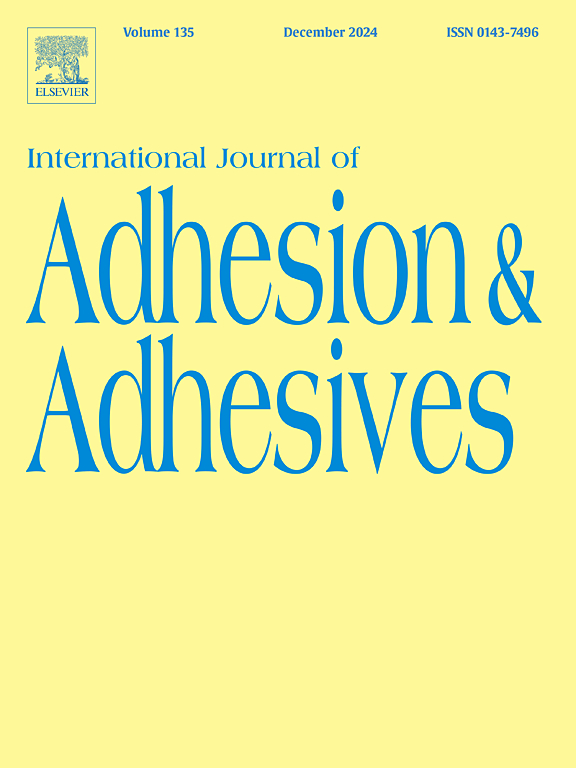An improved piecewise shear-lag model considering stiffness degradation for the fracture behavior of adhesively bonded tubular CFRP/steel joints
IF 3.2
3区 材料科学
Q2 ENGINEERING, CHEMICAL
International Journal of Adhesion and Adhesives
Pub Date : 2024-12-05
DOI:10.1016/j.ijadhadh.2024.103920
引用次数: 0
Abstract
This paper presents an improved piecewise shear-lag model that enhances the understanding of deformation and fracture behavior in adhesively bonded tubular CFRP/steel joints, incorporating adhesive stiffness degradation. The model employs a bilinear traction-separation law to accurately represent the non-linear load-displacement behavior of the adhesive layer. Experiments and simulations validate the analytical results, providing insights into the joint's fracture modes. Our findings highlight the crucial role of adhesive length in determining both initial pulling stiffness and peak pulling force. Specifically, the critical length serves as a key reference for structural design, as the load-bearing capacity remains stable with an increased adhesive layer length. Similarly, the characteristic length scale indicates that the initial pulling stiffness remains constant for adhesive layers longer than approximately 2.5 . For shorter adhesive layers, both load-bearing capacity and initial stiffness vary quasi-linearly with adhesive length. The maximum length of the damaged adhesive layer does not exceed the threshold due to the interplay between damaged and undamaged regions. Additionally, two straightforward formulas are proposed for determining key adhesive parameters (e.g., damage displacement, shear stiffness, fracture toughness) from measurable quantities in standard experiments.
求助全文
约1分钟内获得全文
求助全文
来源期刊

International Journal of Adhesion and Adhesives
工程技术-材料科学:综合
CiteScore
6.90
自引率
8.80%
发文量
200
审稿时长
8.3 months
期刊介绍:
The International Journal of Adhesion and Adhesives draws together the many aspects of the science and technology of adhesive materials, from fundamental research and development work to industrial applications. Subject areas covered include: interfacial interactions, surface chemistry, methods of testing, accumulation of test data on physical and mechanical properties, environmental effects, new adhesive materials, sealants, design of bonded joints, and manufacturing technology.
 求助内容:
求助内容: 应助结果提醒方式:
应助结果提醒方式:


